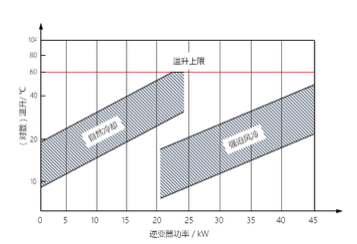Abstract: With the shrinking of the dimensions of photovoltaic inverters and the increase of stand-alone power, the requirements for heat dissipation design are getting higher and higher. Designers must consider the heat dissipation, protection, installability, maintainability, and economic cost of the inverter cooling system. Among them, stand-alone power is an important basis for designing heat dissipation solutions.
Inverter cooling technologies include natural cooling, forced air cooling, liquid cooling, and phase change cooling. Various forms of working principles and features are shown in Table 1.

Studies have shown that the cooling efficiency of forced air cooling is 10 to 20 times that of natural cooling, and a more efficient cooling method is liquid cooling. From the perspective of the complexity of the structure and the difficulty of implementation, the forced air cooling system is simpler, easier to implement, and more reliable than the liquid cooling system. Therefore, the forced air cooling method is preferred in the power supply industry, followed by natural cooling, liquid cooling, and other cooling methods.

Figure 1 Relationship between heat dissipation and heat flux
(Note: The picture is taken from "Heat and Mass Transfer: Fundamentals and Applications" by Prof. Yunus A. Cengel, University of Nevada, USA)
Heat flux density refers to the amount of heat that passes through the cross-sectional area of ​​the object per unit of time. As shown in Figure 1, within the same allowable temperature rise range, the greater the system heat flow density, the more stringent the cooling method required.
In general, electronic components allow the operating temperature to rise in the range of 40-60°C. Under the allowable upper limit of temperature rise of 60°C, natural cooling can assume a maximum heat flux of 0.05 W/cm2. When the heat flux density is greater than 0.05 W/cm2, natural cooling can barely improve the heat dissipation effect through some special measures, but it is necessary to sacrifice the work performance, device lifetime, or economy as a price. When the heat flux density is greater than 0.05 W/cm2, the forced air-cooling heat dissipation method can achieve satisfactory comprehensive performance and economy. As the heat flux density continues to increase, other cooling methods, such as liquid cooling, need to be selected.
For large-scale wind energy converters with powers of several MW, the cooling methods are liquid cooling; the centralized PV inverters with power between 100 KW and 1 MW, the cooling mode is forced air cooling, and the power is from several kilowatts to several Ten kilowatts of string-type photovoltaic inverters are based on single-machine power from small to large, and the heat dissipation design is also increased from natural heat dissipation to forced air-cooled heat dissipation.

Fig. 2 Selection of heat dissipation methods for string photovoltaic inverter
The theoretical analysis is converted into a comparative selection of the actual product in the heat dissipation solution, and the scientific guidance group string photovoltaic inverter is applied to the heat dissipation solution of the product design. As shown in Figure 2, when the power is less than 20kW, natural cooling can be used to achieve the optimal matching of product volume, weight and overall performance; when the power is greater than 25kW, the heat dissipation heat flux density is greater, forced air cooling is more economical and efficient The practical means; when the power is between 20kW and 25kW, the integrated cost performance using natural cooling and forced air cooling is equivalent. The heat dissipation methods used in different power stage inverters on the market are shown in Table 2.

Table 2 Heat Dissipation Modes for Different Power Inverters
Summary: The cooling technologies include natural cooling, forced air cooling, liquid cooling, phase change cooling, etc., and are mainly selected based on the power of the inverter.
The string-type photovoltaic inverter generally works in a rooftop outdoor environment with a temperature above 70° C. Under high-temperature environment, the system cooling effect is particularly important for the performance and life of the product. Power inverters below 20kW can use natural cooling; inverters with power above 25kW are more suitable for forced air cooling.
Fluorescent Brightener OB-1
Blue. Yellow powder, melting point 358 ~ 360 ℃. Have good resistance to heat and light fastness, mainly used for plastic, thermoplastic resin, good compatibility, can also be applied to polyester, polypropylene fiber, nylon protoplasmic tinting; Also used in soluble this product of other polymer
Optical Brightener Ob-1,Fluorescent Brightening Cbs-X,Fluorescent Brightening Kcb,Fluorescent Brightening KSN
FORING IMPORT & EXPORT CO.,LTD , https://www.foringfor.cn
![<?echo $_SERVER['SERVER_NAME'];?>](/template/twentyseventeen/skin/images/header.jpg)